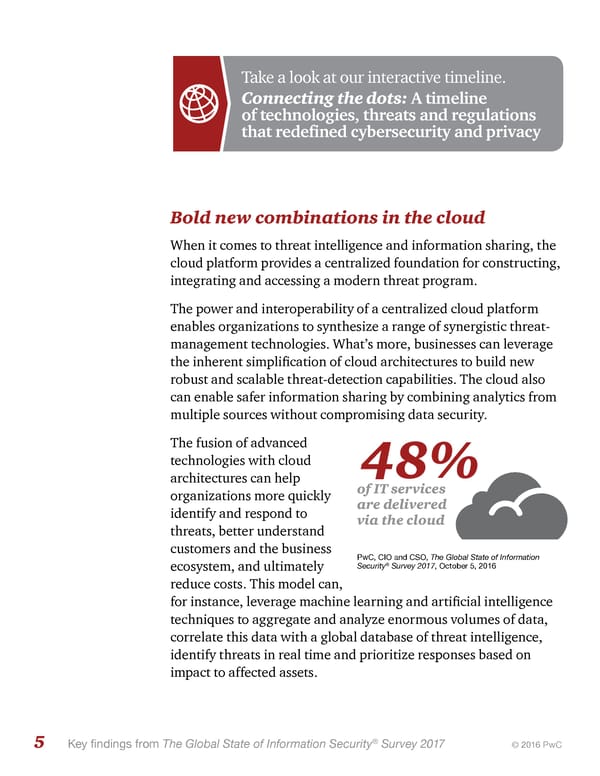Take a look at our interactive timeline. Connecting the dots: A timeline of technologies, threats and regulations that redefined cybersecurity and privacy Bold new combinations in the cloud When it comes to threat intelligence and information sharing, the cloud platform provides a centralized foundation for constructing, integrating and accessing a modern threat program. The power and interoperability of a centralized cloud platform enables organizations to synthesize a range of synergistic threat- management technologies. What’s more, businesses can leverage the inherent simplification of cloud architectures to build new robust and scalable threat-detection capabilities. The cloud also can enable safer information sharing by combining analytics from multiple sources without compromising data security. The fusion of advanced technologies with cloud 48% architectures can help of IT services organizations more quickly are delivered identify and respond to via the cloud threats, better understand customers and the business PwC, CIO and CSO, The Global State of Information ® ecosystem, and ultimately Security Survey 2017, October 5, 2016 reduce costs. This model can, for instance, leverage machine learning and artificial intelligence techniques to aggregate and analyze enormous volumes of data, correlate this data with a global database of threat intelligence, identify threats in real time and prioritize responses based on impact to affected assets. 5 Key findings from The Global State of Information Security® Survey 2017 © 2016 PwC
 Toward new possibilities in threat management Page 5 Page 7
Toward new possibilities in threat management Page 5 Page 7